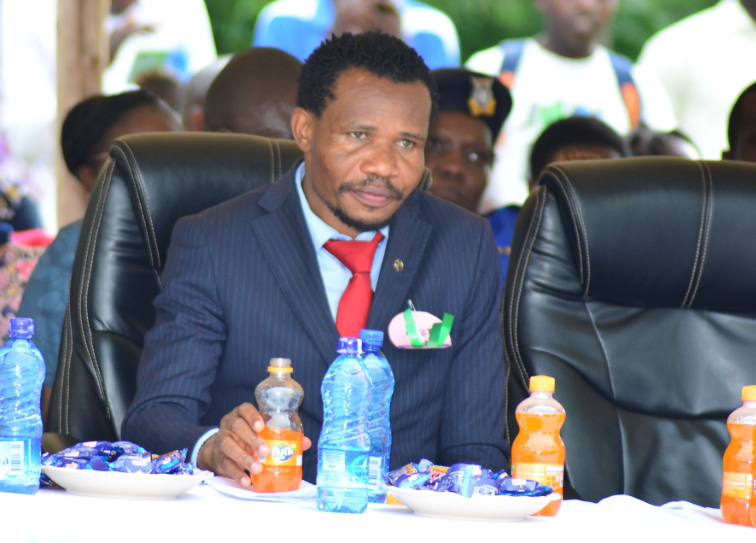Impact of chronic low funding of research

Research plays a critical role in national development, driving innovation, informing policy decisions, and providing solutions to scientific, technological, economic, social, and environmental challenges. In Kenya, research institutions are at the heart of advancements in healthcare, agriculture, technology, and education.
However, despite their significance, these institutions continue to face severe financial constraints that threaten their ability to produce groundbreaking work.
Kenya has a diverse research institutions comprising universities, government agencies, and private institutes. Prominent Government research institutions include, among others, the Kenya Medical Research Institute (KEMRI), Kenya Agricultural and Livestock Research Organisation (KALRO), and the Kenya Industrial Research and Development Institute (KIRDI) that focus on specialised fields of healthcare, agriculture, and industrial innovation respectively.
In the midst of research in Kenya, are the agricultural research institutes like Industrial Crops Research Institute, Sugar Research Institute, Tea Research Institute, Veterinary Research Institute, Sheep and Goat Research Institute, Non-Ruminant Research Institute, Genetic Resources Research Institute, Biotechnology Research Institute among others. Most of these have large tracks of research land, well-built but now dilapidating infrastructure and staff drawing salaries but without any meaningful research taking place therein, due to underfunding.
Current state of research funding
In recent years, Kenya’s research institutions have faced significant financial challenges due to reduced government funding. Data from the State Department on Higher Education and Research indicates that allocations to research projects and the National Research Fund (NRF) have declined from Sh2 billion to Sh500 million in the past decade.
Despite this reduction, Kenya’s total expenditure on research and development (R&D) stands at approximately 0.8 per cent of its Gross Domestic Product (GDP), making it the second-highest spender in Africa after South Africa, which invests 0.85 per cent of its GDP. However, a substantial portion of Kenya’s R&D funding originates from foreign donors rather than domestic sources. This reliance on external funding has led to concerns about the alignment of research priorities with national needs.
Researchers have expressed challenges due to these financial constraints. For instance, while the KEMRI has an annual budget of about Sh7 billion, it receives only approximately Sh1 billion from the Treasury, largely in recurrent expenditure, forcing it to rely on foreign donors for the remainder. With the changing international funding landscape, e.g. the disbanding of the USAID, international support has been dwindling.
The current state of research funding in Kenya underscores the need for a strategic approach to ensure sustainable financing for R&D, aligning with national priorities and reducing over-reliance on external donors.\
One of the most immediate effects of research underfunding is the stalling or abandonment of research projects. Many universities and research institutions struggle to complete studies due to limited financial resources. For example, critical health research at KEMRI and agricultural advancements at KALRO have often been delayed or halted due to budgetary constraints. This lack of funding prevents groundbreaking discoveries that could address pressing issues like disease outbreaks, climate change, and food security.
Brightest minds
Another major consequence is brain drain, where Kenyan researchers seek better-funded opportunities abroad. Many highly trained scientists and academics relocate to countries with stronger research support, such as South Africa, the United Kingdom, and the United States.
This talent loss weakens Kenya’s knowledge economy and reduces the country’s ability to produce homegrown solutions to local challenges. Without sufficient funding and incentives, Kenya risks losing its brightest minds to foreign institutions.
The decline in research funding has also led to reduced innovation and competitiveness on the global stage. Kenya has made strides in technology, healthcare, and agriculture, but underfunding has slowed progress. Countries with well-funded research programs continue to make advancements in areas like artificial intelligence, biotechnology, and renewable energy, while Kenya lags due to resource limitations. This widening gap makes it harder for local researchers to contribute meaningfully to global scientific advancements.
Economic growth
Without urgent intervention, these consequences will continue to hinder Kenya’s development, making it harder to achieve Vision 2030 and other long-term national goals. Strengthening research funding is not just an academic concern—it is a national priority that affects economic growth, public health, and technological progress.
Kenya has several policies designed to support R&D, but their implementation has been inconsistent, leaving the country’s research institutions struggling with chronic underfunding. Despite recognising the role of research in economic growth and technological advancement, government funding remains inadequate, and policy gaps continue to hinder meaningful progress.
The Kenyan government has introduced various frameworks to support R&D, including the Science, Technology, and Innovation (ST&I) Act, 2013, which led to the establishment of the NRF and the Kenya National Innovation Agency (KENIA).
Financial constraints
These entities were meant to promote research by providing grants and coordinating innovation efforts across different sectors. Additionally, Kenya Vision 2030 emphasises investment in science and technology as a key driver of national development. However, while these policies exist on paper, their impact has been minimal due to financial constraints and weak enforcement.
One of the major challenges in implementing these funding frameworks is the failure to meet the African Union’s recommended allocation of 1 per cent of GDP to research and development. Kenya currently spends only about 0.8 per cent of its GDP, and a significant portion of this funding comes from external donors rather than domestic sources. The NRF, which was established to provide competitive grants, has been underfunded for years, limiting its ability to support groundbreaking research. Universities and research institutions are forced to rely on foreign grants, which often prioritise donor-driven research agendas rather than national development needs.
To bridge these gaps, the government must rethink its domestic research funding model, improve financial accountability, and streamline the distribution of funds.
Calls to action
As a university-based researcher, I wish to make the following recommendations to the Government of Kenya, in addressing the chronic underfunding of research institutions in the country, for strengthening research funding and long-term progress:-
- The government should increase budgetary allocations to research, at least to 2 per cent of the country’s GDP to research, as envisioned in the national research policy documents.
- The government must prioritise research funding in its annual budget, ensuring that institutions such as the NRF and public universities receive adequate financial support.
- Research endowment funds should be established. This would provide a more sustainable funding model. Endowments are long-term investment funds where earnings support research activities. Universities and research institutions can create such funds with contributions from the government, the private sector, and philanthropic organisations.
- The private sector must also be encouraged to invest in research. The government can introduce tax incentives and funding-matching programs to encourage businesses to support innovation in their industries. Sectors such as healthcare, agriculture, and technology would benefit significantly from corporate-backed research initiatives, leading to job creation and economic growth.
- Public-private partnerships (PPPs) should be strengthened for sustainable research funding. Collaborations between universities, research institutions, private companies, and international organisations can enhance resource mobilisation and knowledge-sharing.
Without immediate action, Kenya’s research sector will continue to struggle, limiting its ability to address pressing challenges in healthcare, food security, and technology. A well-funded and sustainable research ecosystem is not just beneficial to academics—it is a crucial driver of national development. The time to act is now.
–The Author is a Professor of Chemistry at University of Eldoret, a former Vice-Chancellor, and a Quality Assurance Expert














